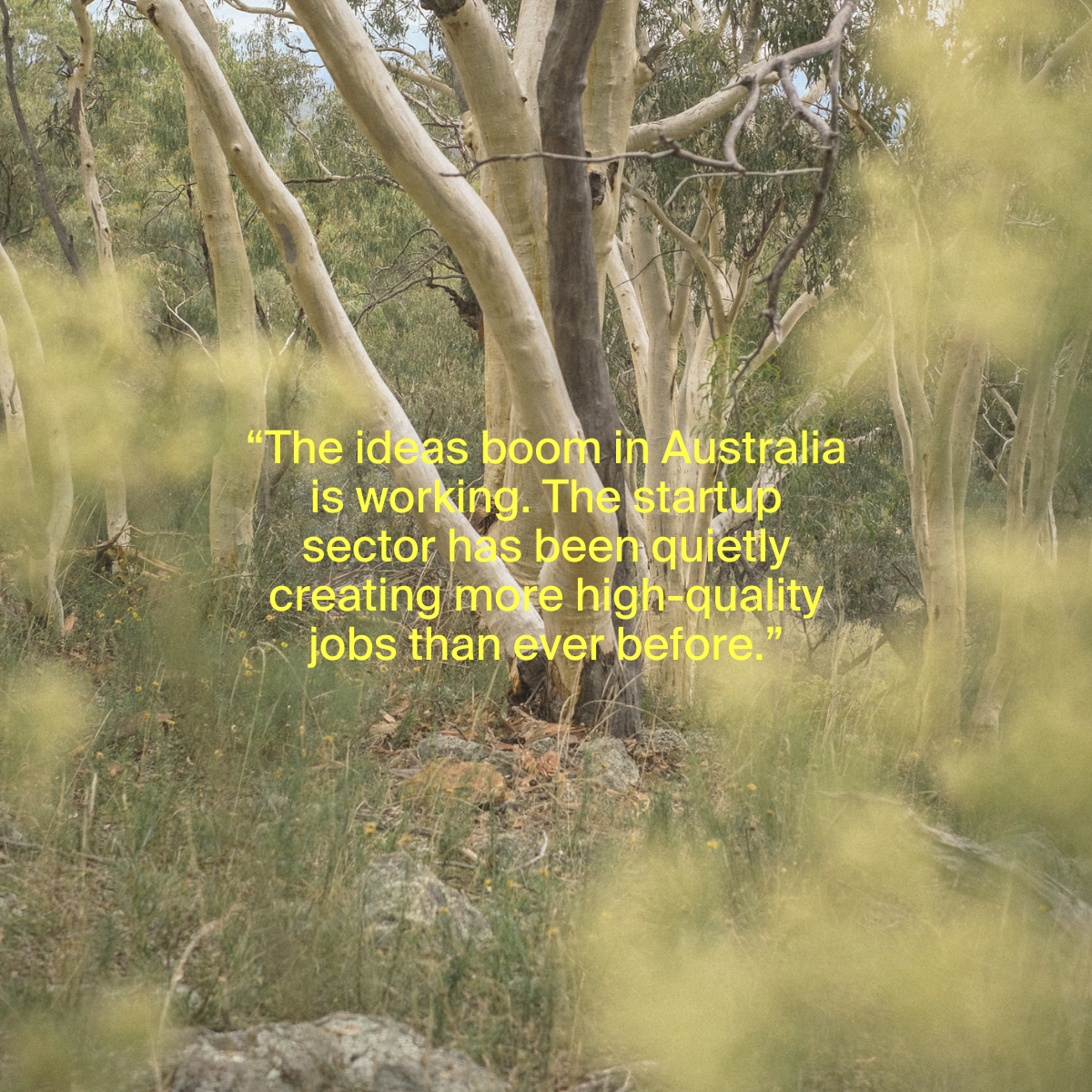You’d be hard-pressed to find someone in the startup ecosystem who hasn’t heard of Rayn Ong. For the unacquainted, and the curious, here’s a wrap-up of Rayn by numbers:
- Years an angel investor: 8
- # of personal investments: 92
- Total personally invested: $6.5M
- Total realised exits: $5.5M
- Current portfolio value: Unknown, but enough to land him on the Young Rich List.
On top of that, Rayn’s launched his own fund–Archangel–with the current tally of investments at 35.
And then there’s his startup t-shirt collection from 2019 if you’re looking for tangible proof of his coverage of the ecosystem:

How did you get started as an angel investor?
I married rich. My father-in-law gave me some money initially to give it a go.
I went to some events and that’s where I met Niki Scevak from Blackbird. He introduced me to the concept of accelerators, angel investing, and venture capital. And I thought this was much more fun than running a company, and I’ve never looked back.
Niki gave me his model for angel investing, which is about diversification and then concentration. Chop your money into two halves. Invest in the same amount of companies every year for four years. Follow on and invest more into the best-looking ones. That advice was crucial to me in helping me not lose all my money in the first year.
In my first year, Blackbird fund 1 was my first investment, and I invested in 5 startups. One of those was Instaclustr, which was acquired in May this year for USD$500M+. I got in at a $3.5M valuation–I rarely see a $3.5M valuation nowadays. It was all beginner’s luck.
How did you get into the Instaclustr deal?
It was a co-investment between ANU Connect Ventures, Canberra Angels and Sydney Angels. I was pretty young and full of energy, so I put my hand up to manage the syndication process; getting the ducks in a row, sharing due diligence materials and reporting.
Nick McNaughton from ANU Connect Ventures was the lead investor, and he asked if I wanted to join the Board. I was a complete newbie and I didn’t know how anything worked. It was a pretty experienced board and I learned a lot.
Looking back, I have been extremely lucky to repeatedly meet the right people and find the right opportunities at the right time.
What were your strategies to build your deal flow?
What I did when I started may be harder to replicate now. There were only a handful of VC funds, a few angel groups and one co-working space. You could pretty much go to every event and talk to everybody. Every time there was a deal, you could look at the cap table and reach out to everyone. After about a year or two, you’d know everyone.
I put in a lot of effort at the beginning because the other investors were mainly older folks from finance or legal backgrounds. Not many of them had an understanding of tech and software. Then I appeared as a software engineer, saying I could do the tech due diligence for them. That was my way into many investment deals.
Do you have a specific vertical that you invest in?
In the first few years, everything looks really good and exciting. After you lose enough money, you will instinctively know what to avoid. It’s trial by fire.
I’ve invested in a bunch of stuff. The one area that consistently makes me money are the SaaS companies. The exceptions are STEPN and Eucalyptus, which both still look pretty good.
What does your process look like from first meeting to investment?
As a fund, we’ll initially invest a small cheque; less than 1% of the fund. If we lose it, that’s fine. It’s a way to start building ownership and relationship with the team over time. As we get to know them, then we may do a medium-sized cheque in round 2 and a large cheque in round 3. By then, it’s an easy, high-conviction investment to make because we’ve been following the team and company for 1-3 years.
What does a “good” team look like?
In the first round, if you can identify who is the builder and who is the seller, that’s usually a good indication that revenue will happen and you won’t get any product delays or go-to-market hiccups.
What’s your strategy when it comes to exits?
There’s beauty in escrow and locking up your share in a company for 5-10 years. There’s always fluctuations in the market, but if the company is still growing and making progress, you’ll look back and think, “Thank god I didn’t sell out in the market correction.”
I usually sell when the founders are exiting. Or I’ll sell when I see competitive tension in the market that makes it harder to win customers.
Lumific was an investment that you’ve exited. Did the expectations you had when investing match the result?
Angel investing has a long feedback loop–you usually don’t see results for at least 5 years.
Most of the time, the casualties happen in the 2nd year because they raise 18 months of runway, and if they cannot raise again, they die in year 2. So most angel investors usually quit in year two, because they would do 10 deals, and 5 of them die in the second year and they realise this isn’t for them.
Lumific was an interesting IP acquisition and we made 3x within a year. That happened in my 2nd year of angel investing, so I was like, “Oh, this is totally working, let’s do it more!”. It gave me the confidence to keep going.
You were voted Startmate’s most valuable mentor in 2018, 2020 and 2021. Tell us about the help and guidance founders get from you once you’ve invested?
My involvement is usually around storytelling and fundraising strategy. For founders, that’s the most important lifeline support in the early days.
If they can’t sell or raise money, they’ll run out of runway and die.
From an angel’s point of view, what other ways have you seen the landscape change?
Risk capital is much more available and I attribute that to faster execution. Teams make things happen much quicker. Operational talent and knowledge have matured and commoditised in the seven years I’ve been around.
Usually, you’d invest money and have to wait a couple of years to see the first million in revenue. Now, you can sometimes see it in the first 3-5 months, which is amazing. That’s a better IRR for everyone.
It used to be a moonlight thing; all the events were in the evening because people had their day job and then their side gig. Now it’s a career, and more and more young people are interested in entrepreneurship.
I think we’ve hit an inflection point in terms of ecosystem support and awareness. We’re seeing good results that drive even more support and good exits that drive liquidity back into the ecosystem.
You’re a prime example of going from an angel investor to a venture partner at Archangel Ventures. How did that transition happen?
It happened organically. When I was writing bigger cheques, I’d tap Ben Armstrong for a conversation because he comes from a corporate, later-stage investment background at Telstra. After he left Telstra, he started asking me about early-stage deals.
He’s now my business partner, and we’re quite complementary. I’m the gut-feeling guy, and he’s the analytical, deal memo guy. I am the t-shirt and he is the suit.
LaunchVic offered us a grant to help increase angel investment activities, we formed Archangel to leverage that. We started as a syndicate in 2020, and from there we moved to a unit trust and pulled together about $10m worth of interest. Then we thought, why don’t we go and form the ESVCLP for the tax benefit? So that was how it all came about.
What we didn’t predict was the demand from the market. After we announced our $10m fund, we got a much bigger response than we anticipated and raised another $15m very quickly. It’s amazing because it’s a good time to build a portfolio.
After you’ve invested, how do you like to be involved?
Investors have to set expectations with founders so we can engineer a strong follow-on round to avoid disappointment down the track.
If another investor has passed and said, “We’d like to see A, B and C happening first”, then we think about whether or not we believe A, B and C will happen. We ask the founders to give us a plan, and then we look at how much budget they need to deliver those things.
In the first year, the problems startup’s face are quite similar. The advantage of having a big personal portfolio is being able to introduce founders to each other to find synergies.
What advice do you have for founders pitching angels?
Establish the ROI of the product. More often than not, people don’t get to that point fast enough.
But that’s how you get people’s attention: If you’re charging someone $1,000 but saving them $10,000, everybody can understand the value. If your product is outside most people’s day-to-day understanding, try to make it clear with data points as that’s how people get comfortable with what you’re claiming.
Also, don’t ask investors to sign an NDA. You can usually show people your house without telling them how you built it.
And what would you say to aspiring angel investors?
Don’t run out of money. There’s a negative compounding effect: you run out of money, stop investing and then people stop talking to you because you’re not investing. Then you lose your deal flow and your relevance.








